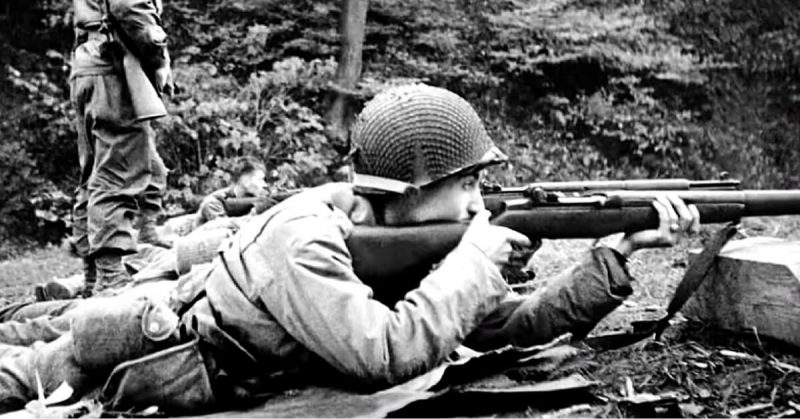Robert Capa, the famous war photographer, once said about taking war pictures that they aren’t good enough if you aren’t close enough. Tony Vaccaro got closer to the war than any other war photographer.
Vaccaro wasn’t an embedded photographer assigned to a combat unit. He was an infantryman in the US Army’s 83rd Infantry Division, fighting on the frontlines from the Normandy invasion until the end of the war.
His story is told in the HBO documentary, “Underfire: The Untold Story of Pfc. Tony Vaccaro.”
During a year of combat, Vaccaro took approximately 8,000 photographs. In a time when it was common and acceptable to stage photographs, Vaccaro captured the war the way the servicemen experienced it.
“I was determined to record everything,” is how he describes his method. He came pretty close.
Now 93 years old, he is still active and alert, he is the core of the film, leading the director, Max Lewkowicz, along with his path through the war.
He also provides commentary on his 272 days in combat and gives considered observations about what the war did to people. Describing how he was able to take the most difficult photos, he simply states, “You have to be cold blooded, you have to be a son of a bitch.”
Vaccaro was orphaned when he was 6. He was raised by an uncle who was an avid hunter. He learned survival and the importance of timing: “a little longer, there is no picture anymore, half a second later the picture is gone.”
He was drafted into the Army two months after he graduated high school. He tried to join the Signal Corps, but he was denied because he was too young.
He became angry that he was considered old enough to kill but not old enough to take pictures. He decided to get a camera and show that he could do a better job than they.
He purchased an Argus C3 for $47.50. It was smaller and more capable than the Speed Graphic models used by the Signal Corps. He was able to get shots that they could not. The camera allowed him to react quickly and capture what he saw.
Vaccaro thought he’d be able to find a camera shop to get his film developed. He was lucky to find a shelled shop with the chemicals he needed in the ruins. He developed his film in four helmets and hung the negatives on trees.
The best moments in the documentary show up when he tells about his best-known photos, like “The Last Step of Pvt. Jack Rose.” It’s one of the few war photos that capture the moment of death.
“Suddenly, life comes to an end and gravity takes you,” Vaccaro says, remembering what he saw more than once. “Regrettably giving up life, we all go down to earth again, all of us.”
When the war ended, he continued as a professional photographer. He never shot another war photo, though. He gave all of his negatives to his sister and didn’t deal with them for decades, Wyoming Tribune Eagle reported.
“It makes you a beast, I became a killer, that’s a terrible thing for a human being to have on his shoulders,” he says movingly of his combat time. “The faces of people you killed, the friends who died, they don’t leave you alone. It took me years to overcome that. It was necessary for me to be evil for 272 days, but not forever.”
https://www.youtube.com/watch?v=ID6GEaLbWIM
